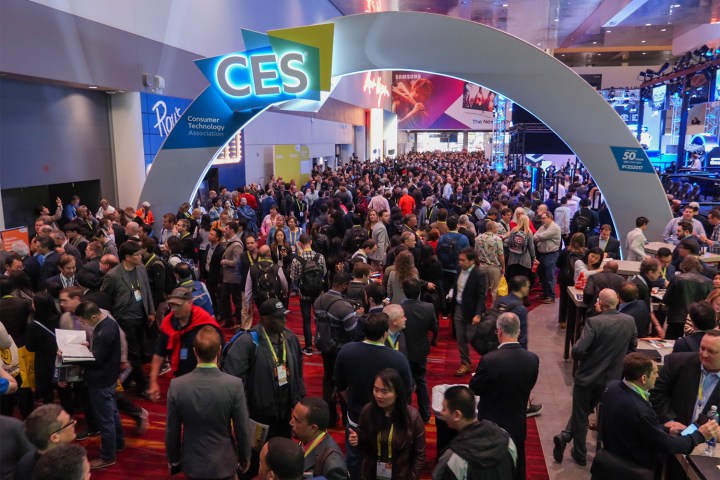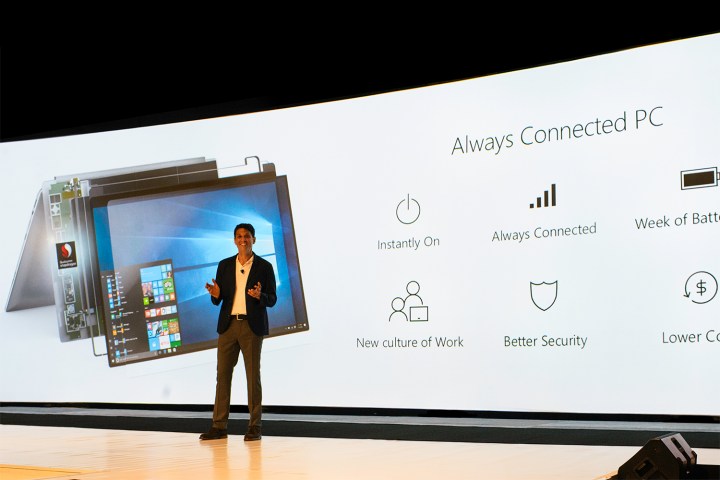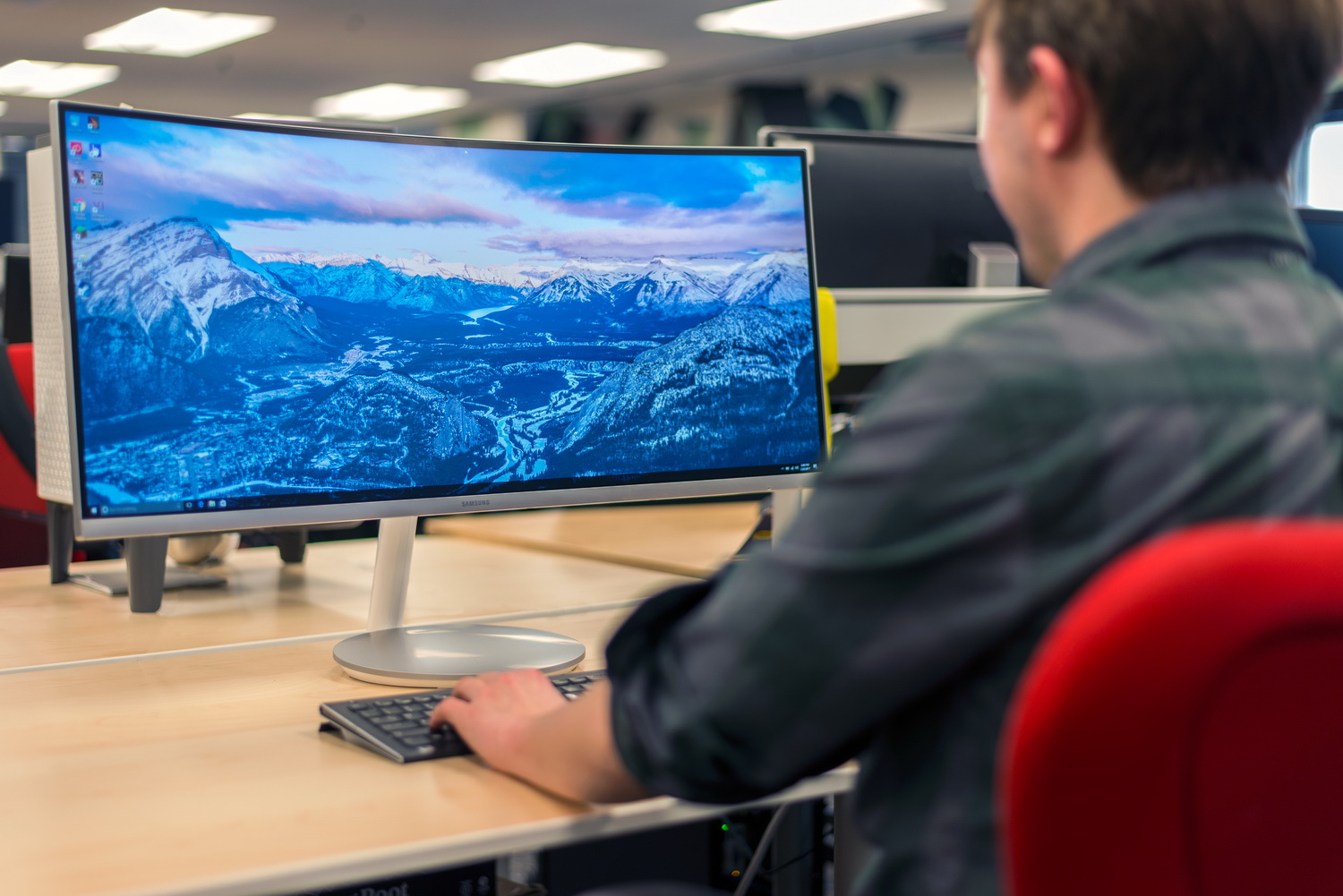
CES is just around the corner, and soon enough we’ll be feasting our eyes on everything the tech world has to offer us in 2018. For now, here are the five computing trends to have your eye on heading into the world’s biggest tech trade show.
Qualcomm LTE PCs galore

Qualcomm made the announcement of its big move into PCs in November at a press conference in Hawaii — and we’ve been thinking about the ramifications of it ever since. The two laptops Qualcomm showed off, the Asus NovaGo and the HP Envy x2, were both impressive devices, boasting both built-in-LTE and 20+ battery life. Those two features alone make them interesting devices and have us interested in what these other “Always Connected” PCs will be like.
The performance capabilities of Qualcomm’s Snapdragon CPUs is one of the biggest remaining questions, but with portability as the primary focus, it may not matter all that much. In addition to those aforementioned computers, we’re expecting similar devices to show up at CES from companies like Lenovo.
Whether Qualcomm’s effort is a game-changer or a complete bust, these new devices are going to turn heads with their unparalleled portability. A couple years from now, we may even be talking about these PCs as one of the most significant changes to computing in years.
Now, everything is a 2-in-1
Speaking of 2-in-1s, don’t expect them to go away anytime soon. In fact, we’re predicting that in 2018, they’re only going to become more important for the PC market. With all the innovation happening around battery life, connectivity, and build quality, it’s hard not to have high hopes for what manufacturers will do with 2-in-1s this year.
They’ll still come in all sorts of flavors: folio designs with detachable keyboards, touchscreen laptops with 360 hinges, and, of course, the aforementioned ones with built-in LTE. What’ll change is not their existence, but their availability.
Whether it’s a cheap 2-in-1 from Asus or a $2000+ Surface Book 2, it’s becoming increasingly hard to find traditional, clamshell laptops. 2018 may not be the year that laptops disappear altogether, but many more companies are throwing in 2-in-1 flexibility as a standard feature. Even Chromebooks are going the way of the 2-in-1, with the Pixelbook leading the way.
Intel 8th-gen chips, Intel CPUs with AMD Graphics

We’ve been using 8th-generation Intel Core CPUs for many months now, but we’re expecting the rest of the stragglers to embrace the new hardware continuing into the first half of 2018. Intel is almost certain to expand its roster of 8th-gen processors, too, so we’ll see the chips show up in laptops that currently don’t have an ideal 8th-gen option, like high-end mobile workstations.
In addition, we’re anticipating the launch of more laptops with the unprecedented combination of Intel CPUs and custom AMD Radeon graphics cards. Squeezed onto a single module, Intel claims the goal is to create thin and light notebooks with serious gaming performance. This could be an awesome choice for mobile workstations and even budget gaming laptops.
The announcement that the partnership could exist within the heated rivalry between the companies came as a shock when it was announced in November, so we’re excited to see what kind of computers could come from the collaboration.
New VR headsets will be MIA

VR headsets have had a big impact on CES in the past, especially when they were first being labeled as “the next big thing.” These days, companies are talking a lot about stand-alone VR headsets that don’t depend on a PC or smartphone. But don’t expect these new headsets to have a huge presence this year at CES.
Oculus has its own stand-alone VR headset that it showed off in October, the Oculus Go, but Oculus doesn’t even have a booth at CES. HTC has its own Vive Focus stand-alone headset, but so far it’s only been announced to be available in China. Outside of these, both of these large companies have been relatively quiet on the premium VR front. Instead, Oculus has been offering price cuts as a solution to getting more units in the hands of VR first-timers.
In addition, Google has begun its own push toward stand-alone headsets on the Daydream platform, though very few have been announced yet. In fact, HTC recently announced that it canceled its Daydream headset in favor of making the Vive Focus. So far, the only rumored VR headset in the line — and the only one likely to make an appearance at CES — is Lenovo’s stand-alone Daydream headset.
It sounds like we’ll have to wait until later in the year to try the rest of them out.
HDR monitors aplenty, but not OLED
CES is the perfect place to show off new monitor technology — and this year it’ll be all about HDR. The ones we’ve used so far have been impressive, though we felt like Windows 10 wasn’t quite ready to handle it just yet. HDR monitors are just getting started, and we’re expecting a host of them to be shown off at CES.
OLED displays have already invaded smartphones and television, but we’re anticipating that they’ll still be rare among computers — including laptops, all-in-ones, and monitors. Dell’s attempt to sell an OLED monitor didn’t go so well, and the early OLED options shown on laptops in 2017 didn’t expand to other models.
Also, in terms of technologies and size, monitors tend to take one step at a time each year — and again, this year will most likely belong to HDR. OLED will no doubt be the future of monitors at some point, but it may be a couple more years before they start showing up in large numbers.
Editors' Recommendations
- The 5 biggest computing announcements from CES 2022
- The biggest laptop trends of CES 2020: Dual screens, 5G, and more




